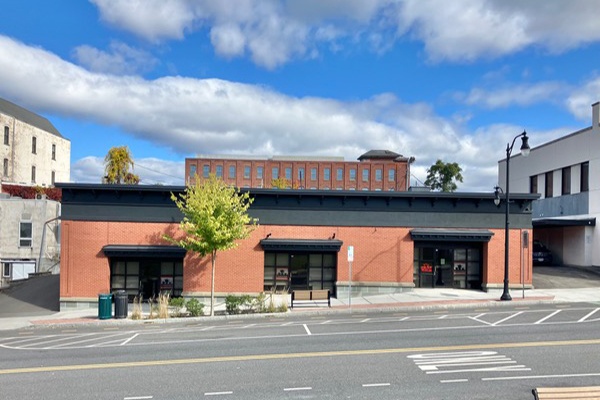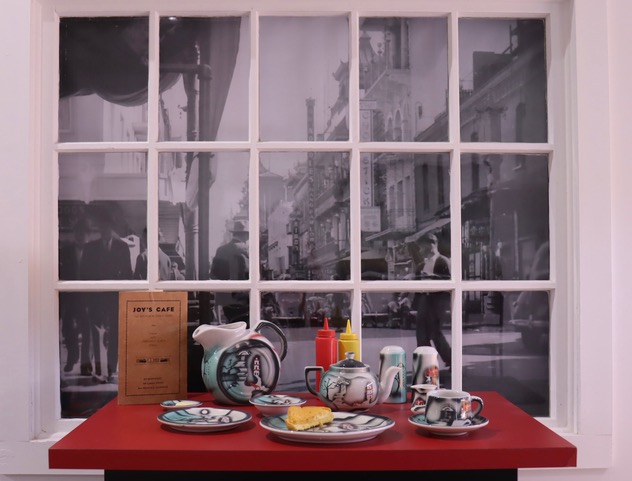|
RCBJ-Audible (Listen For Free)
|
Long-time Curator Margaret Carney Debuts International Museum of Dinnerware Design, Culmination Of A Lifelong Passion & An Academic/Curating Career
By Tina Traster
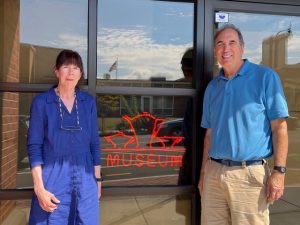 Picture yourself in a world-class museum gazing at lighted clay shards of Greek or Roman pottery or ancient glass goblets or Colonial China, objects used for dining or drinking. These relics inspire awe and imagination but feel detached, untouchable, austere.
Picture yourself in a world-class museum gazing at lighted clay shards of Greek or Roman pottery or ancient glass goblets or Colonial China, objects used for dining or drinking. These relics inspire awe and imagination but feel detached, untouchable, austere.
In the International Museum of Dinnerware Design, which opened last weekend in Kingston, museum founder and curator Margaret Carney puts an intimate and contextual spin on the dining experience through the ages and across the world. Though the inaugural exhibit “Dining Grails” is indeed under glass – including collectible dinnerware by renown designers like Russel Wright, Eva Zeisel, and Roy Lichtenstein, to name a few – the airy but small gallery stirs the visitor’s imagination and memories because the art is accessible. That is truer with “Dining Memories,” a curated tableaux of vignettes including a picnic, a Mid-Century TV dinner, tea aboard the Queen Mary, and a meal at a Chinese restaurant in Manhattan’s Chinatown.
On its opening weekend last Saturday, a visitor was overheard saying, “My mom used to buy me those.” The museum goer was referring to Pop-up book illustrator Robert Sabuda’s Alice in Wonderland’s Madhatter Tea Party. I knew what she meant. The clever vignette of dining in a Chinese restaurant, with a black and white photograph of a cityscape behind a faux window, brought me back to Sunday night dinners when my father drove the family in the yellow Cadillac through the Brooklyn Battery Tunnel to Chinatown for the exotic delicacies and a taste of Manhattan’s frenetic streets.
Memoires around a table etch deeply into our psyches. Like aromas or seasons, they trigger primal feelings. A baby’s highchair with a spilled-milk bottle in the gallery easily conjures up the challenges of a fussy infant. And beautiful stoneware, even under glass, transports us to a day in Vermont, poking around artists’ pottery studios. Tableware journeys us to someplace specific, it’s a place setting for an experience.
Carney, a lean woman with long dark hair that frames her face, understands the power of memory. She curates the intersection of art and lived experience through tableware, be it ceramic, glass, plastic, metal, lacquer, fiber, paper, wood or more.
Carney, who was born in Iowa and settled in Ann Arbor, Michigan with her husband Bill Walker for many years, had amassed more than 9,000 objects over several decades. She served as the director and Chief Curator of the Schein-Joseph International Museum of Ceramic Art at The New York State College of Ceramics at Alfred University through 2002. Carney is a ceramics historian with a Ph.D. in Asian art history, an M.Phil. and Master’s in Asian Art History, and a B.A. in anthropology/archaeology.
An ardent collector of all things tabletop, Carney for decades has been a hunter and collector of good design.
“I didn’t want grandma’s old dishes with flowers,” she said. “I was interested in good design. Functional dinnerware by contemporary artists. Manufactured wares. Big designers.”
As a child, Carney collected match books, bottle caps and later teapots. Eventually the focus because tableware.
“When I founded the museum, I began collecting with a purpose.”
After twelve years of pop-up exhibits in Michigan and beyond, Carney and Walker, a ceramics engineer, relocated to Kingston in June to set up IMoDD at 524 Broadway, the museum’s first brick-and-mortar space.
The 6,000-square-foot building in Kingston’s mid-town neighborhood housed the former Barcone’s Music Center, which closed in 2021. Kingston’s Broadway stretch through Midtown runs between two of the city’s – and the Hudson Valley’s — hottest neighborhoods: the Uptown Wall Street District and the Rondout. Midtown has an emerging arts scene. The HoloCenter, center for the holographic arts, recently relocated from Manhattan to 518 Broadway “to be part of the evolving creative community,” the website says.
In 2023, the Center For Photography at Woodstock (CPW), bought a 40,000 square foot, four-story former cigar factory at 25 Dederick Street for $2.1 million to house its 47-year-old contemporary art center. On its website, it says “The City of Kingston has developed a master cultural plan and aims to develop Kingston as a hub of cultural creative activity.”
The Ulster Performing Arts Center is located at 601 Broadway.
Carney is banking on Kingston’s buzz and brand for the success of her nonprofit enterprise. The couple have bought a ranch house. They signed a five-year lease on the Midtown commercial property for IMoDD.
“When we came to Kingston, we saw this building first,” Carney recounts, adding that it was open, spacious and had basement space. “Nothing else looked good. It was love at first sight. I couldn’t un-see it.”
The museum’s board includes Judith Schwartz, Ph.D., Professor Emeritus, New York University, an artist, curator, lecturer, juror, conference organizer, and author most notably of Confrontational Ceramics; Scott Vermillion, a 40-year careerist in industrial and graphic design, Ari Weinzweig, CEO and co-founding partner of Zingerman’s Community of Businesses; Kene J. Rosa, art dealers William Straus and Charles Alexander, and Julie Gaines, founder of Fishs Eddy, and others.
Jean Richards, daughter of the famous tableware designer Eva Zeisel and a New City resident, sits on the museum’s advisory council.
Carney credits the Rockland County-based Richards and Zeisel with inspiring her to think about siting the museum in New York.
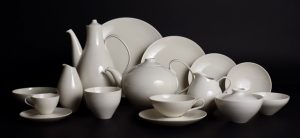 In 1999, Carney curated Lost Molds and Found Dinnerware: Rediscovering Eva Zeisel’s Hallcraft, which combined Zeisel’s playful dinnerware designs with the original plaster molds created in the 1950s at the Hall China Company in East Liverpool, Ohio. The molds served as the tools for mass producing the best-selling dinner set in the United States. For nearly four decades after production of these captivating wares ceased, the original Hallcraft master molds appeared to be lost. Through efforts made by Zeisel and others, including Carney and Walker, the molds were rediscovered in 1998.
In 1999, Carney curated Lost Molds and Found Dinnerware: Rediscovering Eva Zeisel’s Hallcraft, which combined Zeisel’s playful dinnerware designs with the original plaster molds created in the 1950s at the Hall China Company in East Liverpool, Ohio. The molds served as the tools for mass producing the best-selling dinner set in the United States. For nearly four decades after production of these captivating wares ceased, the original Hallcraft master molds appeared to be lost. Through efforts made by Zeisel and others, including Carney and Walker, the molds were rediscovered in 1998.
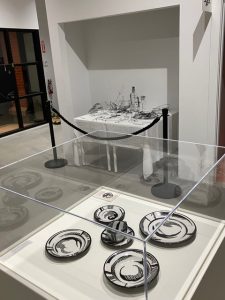 Zeisel, the Hungarian-born artist, is best known for her ceramic designs including the dinnerware service commissioned in the early 1940’s for the Museum of Modern Art. Zeisel died at the age of 105 in 2011. She was still designing the year before she passed away.
Zeisel, the Hungarian-born artist, is best known for her ceramic designs including the dinnerware service commissioned in the early 1940’s for the Museum of Modern Art. Zeisel died at the age of 105 in 2011. She was still designing the year before she passed away.
“It wasn’t until Eva passed away – and I realized I wasn’t going to live to 105 – that I decided to do this.”
Carney, a collector of both things and ideas, is thinking big. For now, her new venture is a challenge, as she settles into a new city, tests the Kingston waters, seeks money through fundraising and grants, establishes the museum and its concept, figures out how to spread the word.
“This is not a small museum concept,” she says. “We already have a library. We will have conferences and studios. Maybe a café. A chef in a café, food-centric ideas through shared dining experiences. Eventually I see us having a minimum of 20,000 square feet.”
Carney’s energy is infectious. No object is just an object – it’s always a story. This curator says dining is not just about functional pottery – it’s the whole experience, it’s about relationships, it’s a window into our experience and our cultures.”
The museum is open Thursdays through Sundays. Admission is $10.







